Emptiness recalls Benassi’s specific feeling with respect to an a posteriori investigation of his production. An “emptying out” that is understood as a path of public self-exposure: the photographer gives himself entirely to the viewer, delivering the set of shots that give life to a decade-long investigation on the themes of identity, night, and work. An act of openness to the outside world that constitutes a zero point in the artist’s career, and conversely, a possible rebirth.
Void is also the title of the installation that greets the viewer at the entrance to the museum rooms. Benassi has reconstructed his studio within the exhibition, completely emptying his usual work space. The installation, composed of tools, images, posters, objects and casts of classical sculptures, fanzine stamps, his studio, and his tools, reconstructs the creative landscape that accompanies Benassi in the gestation of his work, offered here generously to the viewer.
Jacopo Benassi has been photographing since the late 1980s, in the bed of La Spezia’s underground culture: in fact, his first photograph was taken in a social center to a punk group. Over the years, the photographer has developed a very personal style, where depth of field is annulled and flash light becomes a kind of signature, a stylistic limit that Benassi imposes on himself in order to arrive at a raw and powerful photograph, devoid of mediation. For the photographer, the flash is not a means of adding light to an existing light, but a way of totally erasing real light. Photography thus becomes a forced act, an event created by the artist in which the perfect shot does not exist.
The subjects photographed by Benassi are the most disparate, a varied humanity that moves from the international underground and music culture starting with the experience of the B-Tomic club, to portraits of models, actresses, artists, fashion designers published in some of the most important Italian magazines, to the investigation of the body, a possible red thread of a pantagruelic production, ranging from the autobiographical documentation of sexual encounters, to the intense gaze on ancient statuary.
The exhibition opens with two photos showing a procession in Catania and a moment of “pogoing” in a latest punk club. The formal recurrences within the two photographs allow the mirroring between the idea of religion and rock, between a religious and a secular ritual. Benassi is fascinated by religious symbols and iconography: crosses, votive offerings, Marian images, constantly return in much of his production. Other images related to the musical dimension portray the environment of Club Btomic, run by Benassi together with some friends in La Spezia from 2011 to 2015: the audience present at the concerts, the musical instruments, the characters who animated the club. The Btomic holds a fundamental importance for the artist, a place of experiences and encounters, capable of giving rise to an extremely specific photographic imagery.
Flanking the photos related to the La Spezia venue are a number of portraits of musicians and singers: these are immediate photographs, with the flash placed frontally to the subject that returns a visually impactful portrait. The selection features some of the musicians who represent for the artist the very essence of music, from Sonic Youth to Blondie, via Lydia Lunch, rock star of the New York underground, portrayed just inside the Btomic. It was music, played and listened to, that brought Benassi closer to photography and somehow grafted the idea of rhythm and succession into the image.
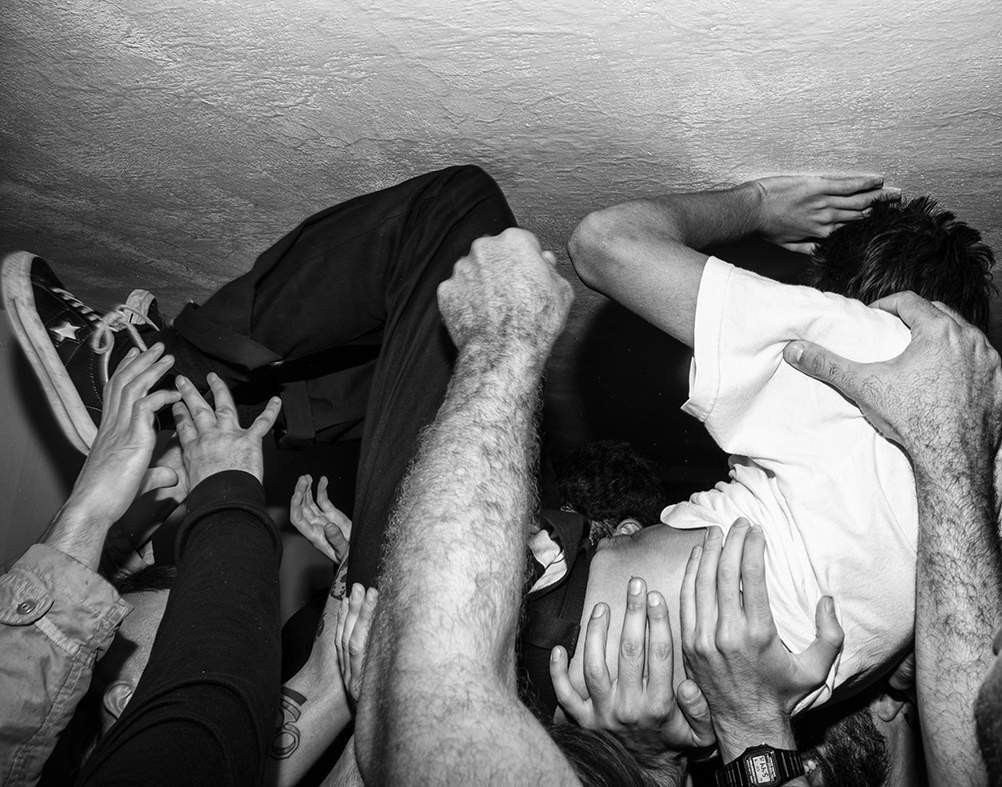 |
| Jacopo Benassi, Pogo (2018) |
 |
| Jacopo Benassi, Debbie Harry (2009-2010) |
A special place in Benassi’s work is occupied by the self-portrait, which often accompanies his performative journey. Photographing himself becomes a mode of self-knowledge for the artist, as he himself declares, “I like to look at myself in photographs, I know how to photograph myself.” Experimentation with performance, both by Benassi himself and others, is constantly linked to music and is always mediated by the photographic image, grafting a mixture of photography, sound, and movement of the body in space.
Also connected to self-portraiture is the work Selfportait 1970/2019, perhaps Benassi’s only completed project. Linked to the photographer’s homosexuality, the slippers represent the discovery and acceptance of one’s identity. Collected, photographed and finally placed within the large installation, the slippers are an element of his own biography employed as a kind of synecdoche, shaping a self-portrait constructed over time. Even in the context of a heterogeneous body of work, the body seems to be the de facto constant in Benassi’s production, investigated both in its connection with classical statuary and in its homoerotic transposition.
A series of heterogeneous subjects converge, for example, in the project Crack!, a reflection by the artist on the body (his own and others), on the idea of rupture and decay that the body brings with it. The images draw on the artist’s autobiographical event (a fall and subsequent convalescence) and bring together variegated suggestions that connect nature, street fights, car accidents, ancient statues, through the idea of fragility, relationship and care.
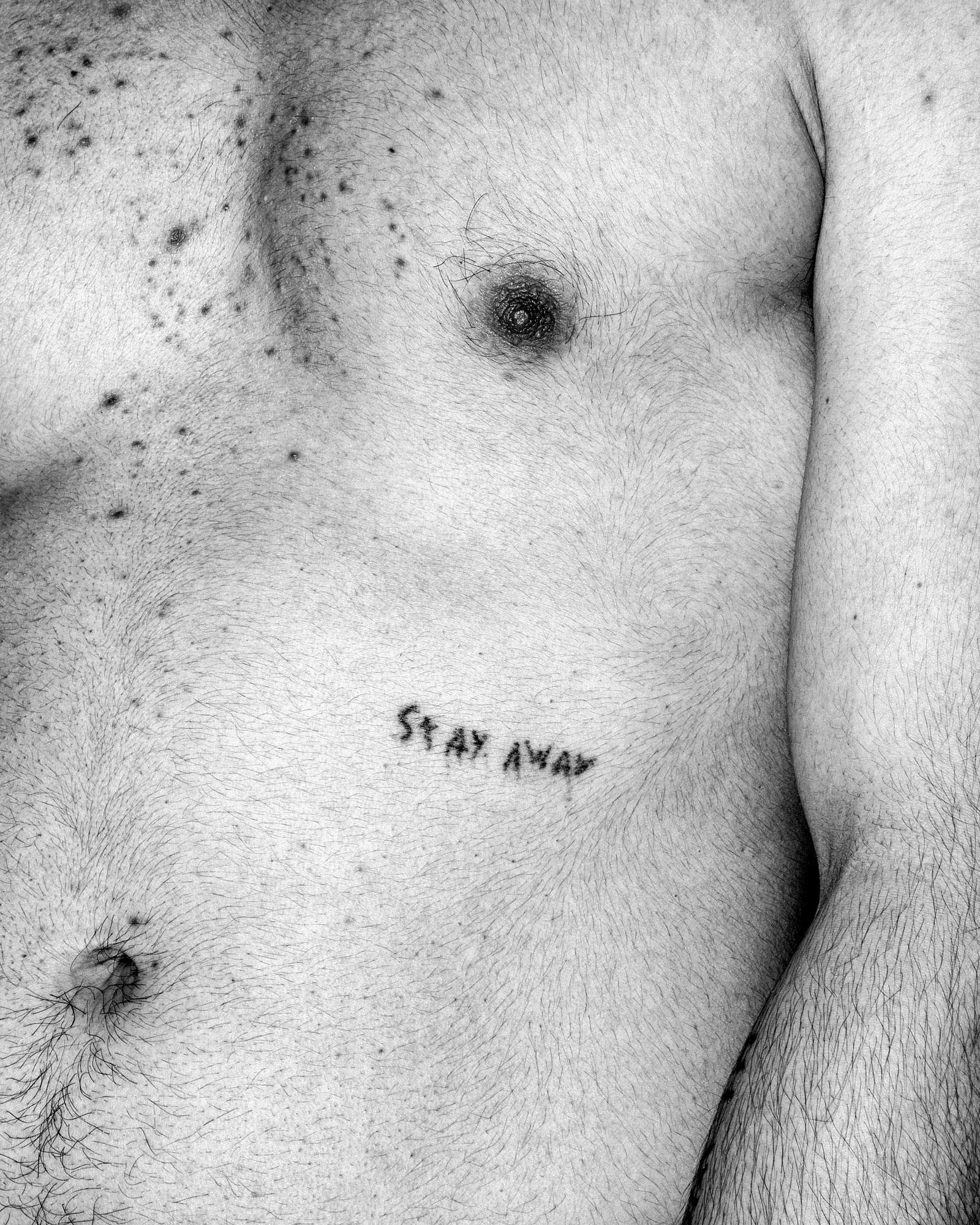 |
| Jacopo Benassi, Brutal Casual (2020). |
Benassi’s homoerotic experience, on the other hand, is, for example, admirably summarized in Fags, an ongoing photo book project where the photographer puts together shots that chronicle his private life since the early 2000s. The series is related to the artist’s sexual encounters; they are explicit but at the same time extremely intimate images, depicting real relationships, battuage places, details of lovers’ bodies captured as abstract forms. The artist’s homosexuality is a fundamental trait of his biography; his coming out also coincides with the formalization of a precise photographic style: both events constitute a kind of epiphany and liberation in Benassi’s path, who precisely in relation to the Fags project declares that it “enters forcefully inside my life.”
The exhibition also features unpublished works that restore Benassi’s interest in publishing and book production. It is from a recently published publishing project, for example, that The Belt series is generated, a photographic project dedicated to Prato, a city of art and a recognized center of the textile industry. Textiles, machinery, portraits of artisans and their working hands, people caught in moments of pause or in the act of eating meals: Benassi’s images mix prosaic elements with sacred images to relate carnality and materiality of the industrious humanity that distinguishes Prato, to the icons of its history and the artistic tradition that shines through in the city’s places.
- the belt
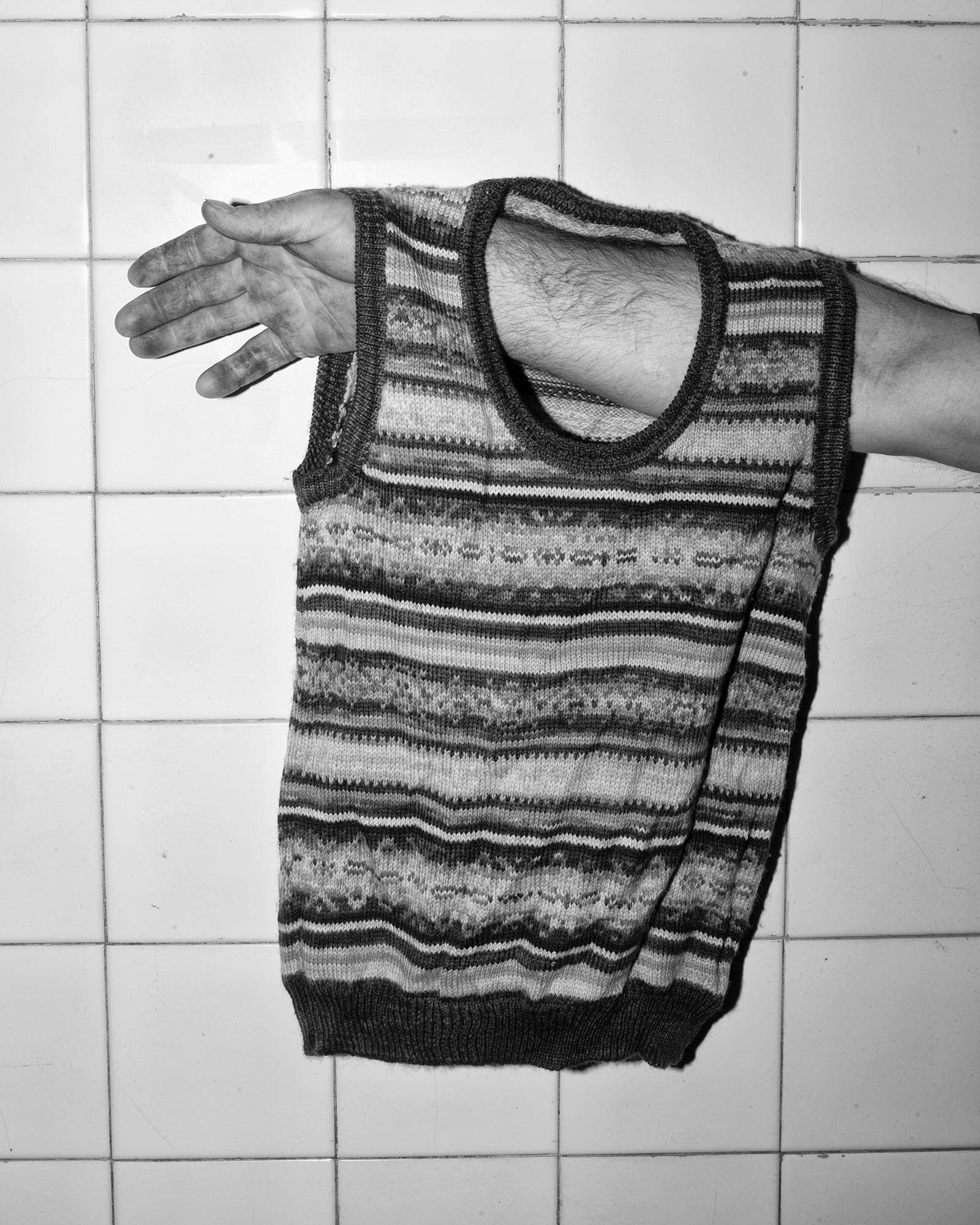 |
| Jacopo Benassi, The Belt (2020) |
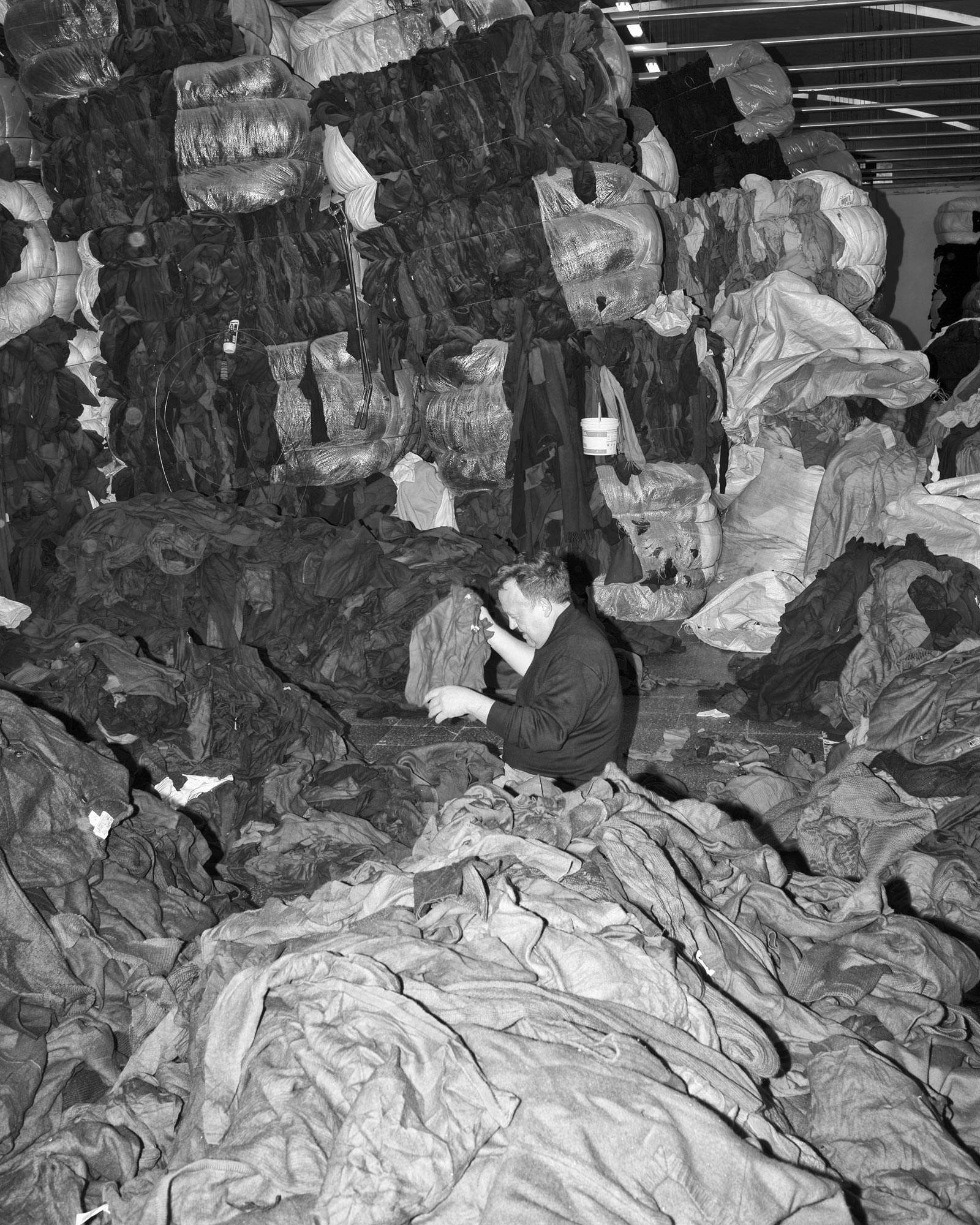 |
| Jacopo Benassi, The Belt (2020) |
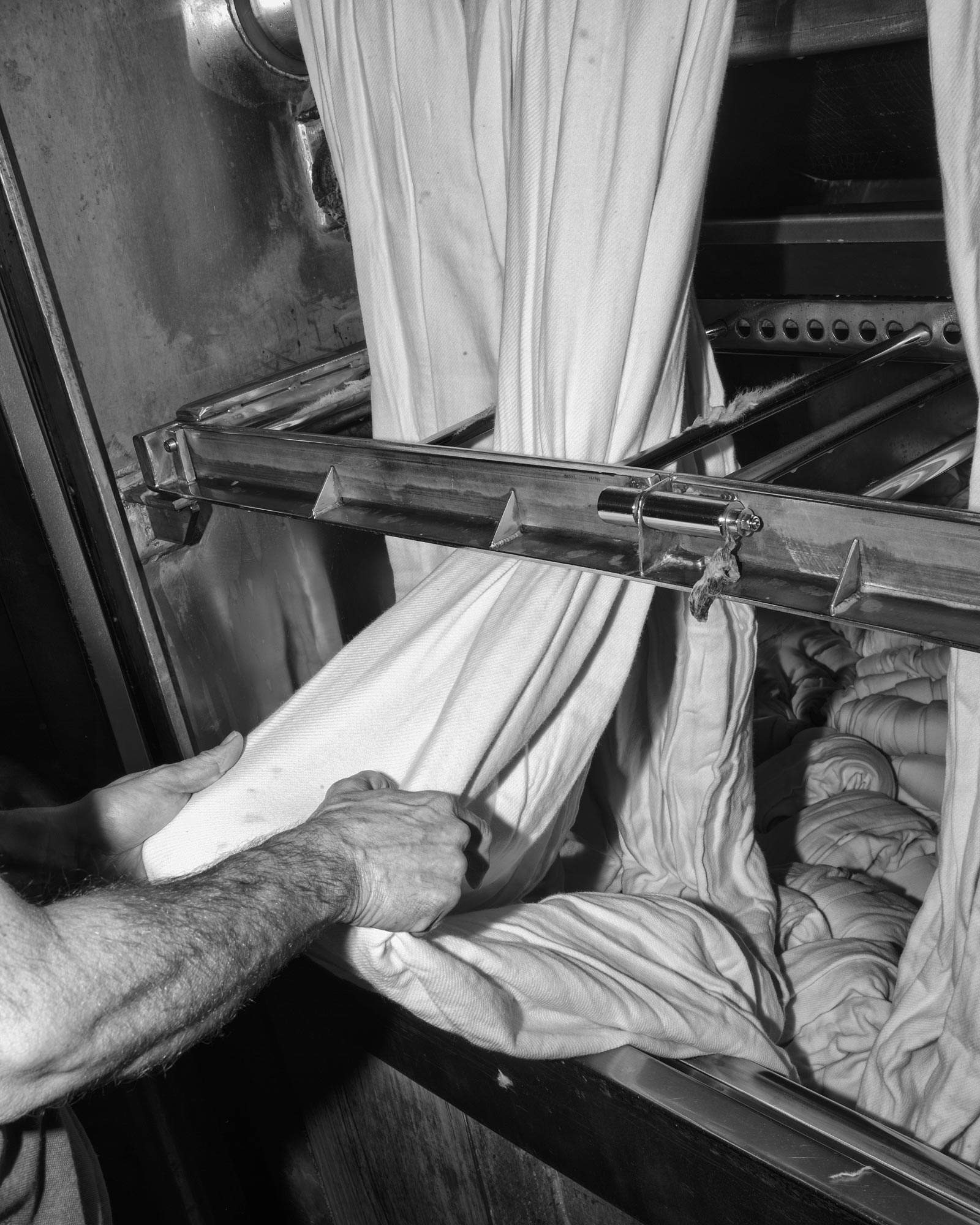 |
| Jacopo Benassi, The Belt (2020) |
Warning: the translation into English of the original Italian article was created using automatic tools. We undertake to review all articles, but we do not guarantee the total absence of inaccuracies in the translation due to the program. You can find the original by clicking on the ITA button. If you find any mistake,please contact us.